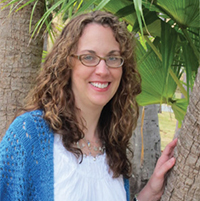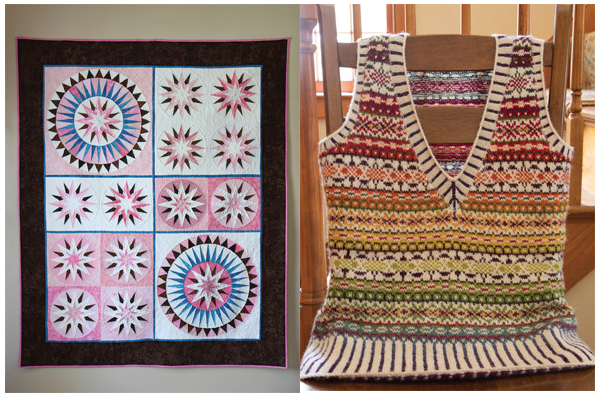
Image Credit: Feng Yu/shutterstock.com
In late March 2012, I awoke with pain in my left hand. I had difficulty moving my metacarpophalangeal (MCP) joints. They did not move smoothly, but clunked. As I repeatedly attempted to open and close my hand, I realized that I had morning stiffness. As the pain and stiffness gradually improved over the next hour, I remained in disbelief and hoped that it would not return. I would not experience another morning without joint stiffness until I took prednisone.
I am a rheumatologist who has developed rheumatoid arthritis (RA). I completed my rheumatology fellowship at Brigham and Women’s Hospital, Boston, in 2001. During my fellowship, I studied the post-translational regulation of cytokine production. I also wrote a review on intracellular signaling in RA, never imagining that I would one day have the disease myself.
The Onset
In 2010, I first experienced foot and ankle pain during a weeklong gastrointestinal illness. The stiffness that accompanied this joint pain made me suspicious of an inflammatory etiology. However, I had no joint swelling. When the joint pain recurred several times during the next year, despite resolution of the intestinal symptoms, I wondered if I might be imagining it. I mentioned the joint symptoms to my primary care physician, but I deferred any additional testing, because I did not have synovitis, and months passed without any symptoms. I was able to hike up a 10,000-foot mountain and swim 2,500 meters without difficulty.
I can never be just a patient, because my own knowledge base & experience influence every visit.
Soon after my first episode of hand stiffness, my metatarsophalangeal (MTP) joints and ankles became persistently painful and swollen. The morning stiffness was most severe in my hands and feet. My wrists, hips and knees also began to hurt. I experienced overwhelming fatigue. Any doubts about the reality of my predicament faded one morning as I got ready for work. I glanced at my feet, and I realized my right 4th and 5th toes were deformed. My previously straight toes were now floppy and crooked. I also developed a change in the shape of my right hand. My MCP joints were no longer perfectly aligned. The 2nd and 3rd were more prominent, and the 4th and 5th had a more sunken appearance. It was alarming how quickly these changes occurred.

Dr. Piecyk, wearing a shawl she knitted.
While driving, I had pain with the simple act of pressing my foot on the gas pedal. I had difficulty walking down long halls at work, something I had done hundreds of times without even thinking. I had trouble typing, which made the use of my electronic medical record difficult. My 4th and 5th fingers would not work as my brain directed. I always attempt to be gentle when shaking a patient’s hand, and now some of my patients were unknowingly causing me pain with their greetings. I had difficulty maneuvering a leg to examine a hip, and I had difficulty holding a syringe. I could not turn on the shower in the morning. I could not knit, sew or take pictures, activities that I love. When I told my husband that I was pretty sure I had rheumatoid arthritis, the first thing he said was, “Time to give away all of your yarn.” This was not what I needed to hear.
I did have risk factors for rheumatoid arthritis. I am female. I have a family history of lupus in two maternal aunts and a cousin. I had a gastrointestinal illness at the onset of my initial joint symptoms two years previously. Research suggests that alterations in the microbiome may play a role in the initiation of autoimmune disease. In one study, an increase in the bacteria Prevotella copri correlated with disease in new-onset rheumatoid arthritis.1 I also had a history of recurrent idiopathic pericarditis that may have not been idiopathic after all.
Reactions
One thing I struggled with was when to seek care. I was caught between self-doubt and the urge to act: self-doubt about the reality of my symptoms and the probability that I had an inflammatory arthritis. I did not want to be wrong in my diagnosis. The urge to act struck me on the first morning I awoke with hand stiffness. Part of me knew right away that I had to start a disease-modifying antirheumatic drug (DMARD).
For weeks, I questioned myself: Is this truly RA? Have I waited too long? Has irreversible damage occurred? Will this just go away? I tried to take a step back and look at myself from the intellectual standpoint of a physician, but it was difficult to objectively think of myself as the patient. Like my fellow rheumatologists, I have complete confidence in my ability to detect synovitis in a patient. However, I found it impossible to be objective when examining my own hands.
I experienced a grief reaction to having a chronic disease. I knew that my feelings were normal for a patient, but I also felt somewhat guilty for having these feelings. I felt that if my patients could cope, then why am I having difficulty? I counsel patients all the time and felt this should somehow make me better equipped. I discovered instead that there is an enormous emotional component when the patient is me. Denial led to my reluctance to seek care right away. I felt a sense of loss of health and function.
I also felt a sense of loss of control. Rheumatoid arthritis is unpredictable, and I did not know how well I would function from day to day. I cried, usually while I was alone in my car. I had stepped into the role of the patient. My husband, also a physician, has been supportive after he recovered from his yarn comment blunder. However, I found that it’s more difficult to have the full support of extended family when I am an expert in my own disease.

Two of Dr. Piecyk’s recent projects, a quilt she made (left) and a vest she knitted (right).
Doctor to Doctor
As a rheumatologist, seeing another rheumatologist for care was a surreal experience. I felt caught between wanting to be a well-behaved patient and wanting to take control. At my first visit, my doctor told me, “I don’t start a DMARD at the first visit.” I did not push the issue, because I was trying to establish a good relationship and be a good patient. But another part of me felt I should have challenged this. I know that my rheumatologist was also trying to do what was best and to treat me like any other patient. But I was not the typical rheumatology patient.
I can never be just a patient, because my own knowledge base and experience influence every visit. I already understood what came next. I did not have time to gradually adjust to my diagnosis.
I knew immediately that I am at increased risk for osteoporosis, cardiovascular disease, lymphoma, disability and death. I had seen the worst cases, and I knew what can happen.
At that first visit, I started prednisone, and within a couple of weeks, I was also taking methotrexate, less than two months after I awoke with hand stiffness. The first time I went to the lab carrying a slip with 714.0 written on it was also a strange experience. I had written that billing code for rheumatoid arthritis for my own patients countless times, and now it applied to me.
Several months later, my symptoms had improved, but not as much as I had hoped. My next challenge was to get a TNF inhibitor approved. Again, I found myself caught between wanting to be a well-behaved patient and wanting to take control. After my office visit, I politely waited a week before calling the office. When two weeks had passed and I still did not have approval for my medication, I called my insurance company, then two pharmacies and then the doctor’s office again. Finally, the shipment was arranged. All told, it took about a month before I received the medication. I understood my patients’ frustrations to a much better degree. However, I had something that most patients don’t have: rheumatologist colleagues.
When my first dose was delayed, a colleague offered to give me my first TNF inhibitor injection. Initially I declined, because I felt guilty about going outside the system and taking advantage of this perk—one not available to my patients. The following week, as I continued to hobble through the halls of the hospital and still did not have the package at my doorstep, I shamelessly went to his office for my first injection.
Simple Tasks
During the ACR/ARHP Annual Meeting that I attended that first fall, the Simple Tasks campaign had personal meaning for me. On the morning of the first full day of meetings, I attempted to open a small travel jar containing a liquid with which to tame my curly hair on a humid day. My hands would not cooperate. I used a dry washcloth and then a wet washcloth, again without success. Next, I held the jar under warm running water, but again, I could not open it. I filled a glass with hot water and soaked the jar in it, but even with this maneuver I could not open the jar. At this point, my options were either to bring the jar to the front desk and ask for assistance or to live with frizzy hair for the day. I opted for untamed hair. When I returned to my hotel room that evening, I opened the jar without difficulty. As the meeting progressed, the simple task of walking from place to place in the large venue became more difficult for me.
At the most recent Annual Meeting, I felt a sense of privilege. It’s the rare RA patient who gets to peruse and understand the latest posters with her own interests in mind. During sessions on RA, I thought not only about how this information might benefit my patients, but also about how it might benefit me. How can I lower my risk for cardiovascular disease? How I can I optimize my use of methotrexate? The presenters’ frequent use of “we” (i.e., the rheumatologists) and “they” (i.e., the patients) also caught my attention.
I counsel patients all the time & felt this should somehow make me better equipped. I discovered instead that there is an enormous emotional component when the patient is me.
Lessons Learned
My experience during the past three years has taught me many lessons. I have a greater appreciation for my patients’ experiences, especially those with inflammatory arthritis. Although each patient’s symptoms may differ, I now have first-hand experience with joint pain and morning stiffness. My own experience has helped me better understand my patients’ daily limitations and fears, including the fear of not being able to do what they love. It has made me quicker to realize when someone needs better control of their arthritis in order to function. The amazing resilience and ability to cope some patients exhibit are even more apparent to me now.
I have a better understanding of patients’ lack of precision in answer to my questions. For example, a common question for a patient with rheumatoid arthritis is the duration of morning stiffness. I have found that it’s difficult to answer succinctly when one morning the stiffness lasts three hours, and the next day it lasts 20 minutes, and the next day it never quite goes away, but I was in the car for four hours. This topic was explored in a recent paper.2

Dr. Piecyk has been able to resume hiking, an activity she loves.
I have a new understanding of the risks and benefits of medication. I have experienced weight gain and insomnia while taking prednisone, hair loss and elevated liver enzymes due to methotrexate, and injection-site reactions with TNF inhibitors.
My experience with rheumatoid arthritis has also made some aspects of being a rheumatologist more difficult. The more similarities between a patient and myself, the more difficult it can be to remain objective. For example, I don’t want my own experience to influence my choice of medication for patients. If a medication did not work for me, it might still be helpful for someone else. I have also felt that I am sometimes a less effective physician to those patients with minor symptoms. This was apparent especially when I first developed symptoms and during flares. I found my patience decreased as I sat there with hand, hip, ankle and foot pain, while the patient in front of me went on and on about an intermittent thumb pain. If I was struggling to make it through the day, having compassion for a patient with a minor musculoskeletal symptom was honestly difficult. I am no longer just the doctor, but a doctor influenced by her own experience as a patient.
Another issue as a physician-patient is whether I should share my own experience with my patients. I have disclosed if I think it will somehow improve the patient’s care. (Editor’s note: Also see “Tips for Physicians on Handling Personal Problems at Work.”) Although this knowledge can create a strong bond in the doctor–patient relationship and help the patient feel less alone, I don’t want the patient to feel responsible for me or to feel guilty if they are doing better than me. It makes me more vulnerable, and perhaps more human, in the patient’s eyes, but seeking understanding from a patient is also a selfish act. The focus of the visit should be on the patient and not on me.
“What would you do?” now has a new significance.
Life Continues
I am grateful for the remarkable medical advances in rheumatology that have made it possible for me to continue to work and to return to hiking, skiing, biking, knitting and sewing. The roles in my life are no longer as separate as before the onset of RA. I am yet another patient anecdote, but one with a unique perspective.
Monica Piecyk, MD, is a rheumatologist at New England Baptist Hospital (NEBH). In addition to her work at NEBH, she holds an academic appointment as instructor in medicine at Harvard Medical School. Dr. Piecyk enjoys teaching and is a member of the American College of Rheumatology and American College of Physicians. She is board certified in both rheumatology and internal medicine.
References
- Scher JU, Sczesnak A, Longman RS, et al. Expansion of intestinal Prevotella copri correlates with enhanced susceptibility to arthritis. eLife. 2013;2:e01202.
- Orbai A, Smith KC, Bartlett SJ, et al. ‘Stiffness has different meanings, I think, to everyone’: Examining stiffness from the perspective of people living with rheumatoid arthritis. Arthritis Care Res. 2014;66:1662–1672.
